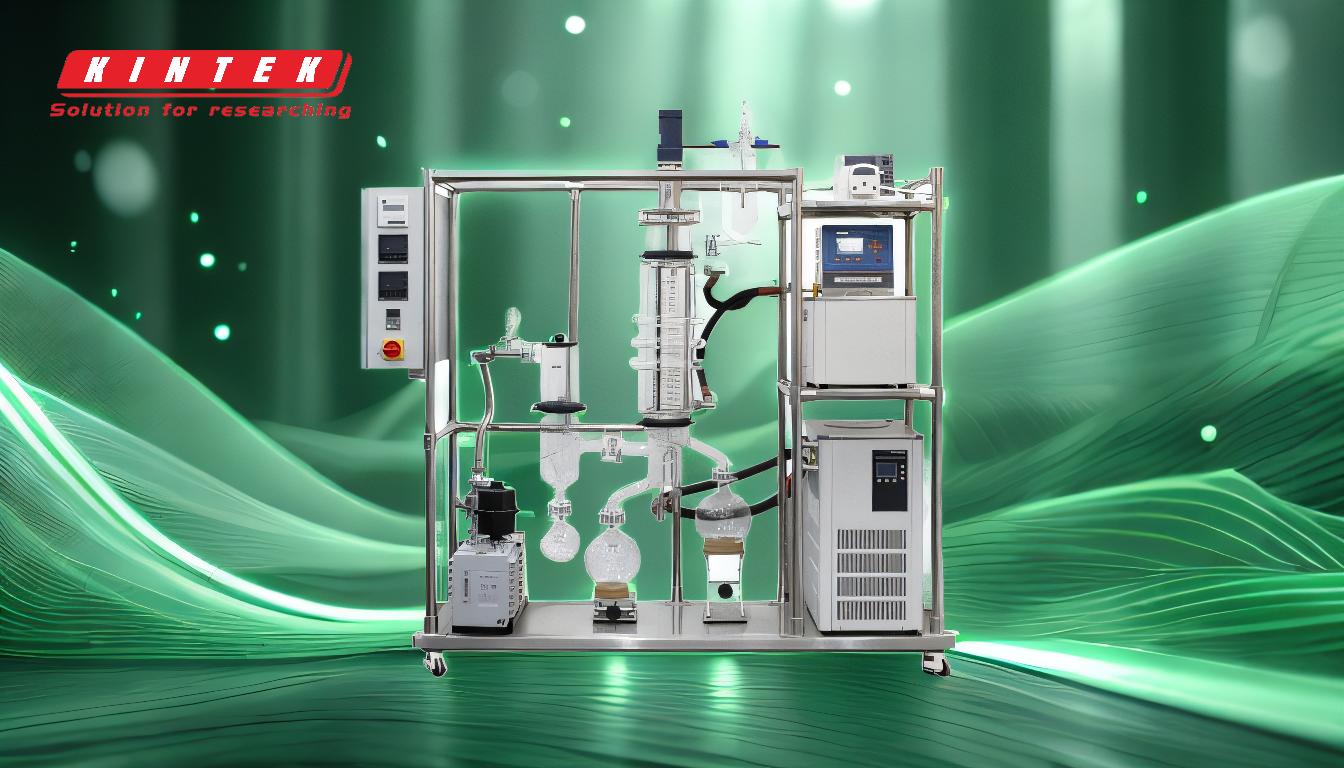Distillation is indeed a highly effective method for separating mixtures based on differences in boiling points. The process involves heating the mixture to vaporize the more volatile components, which then condense and are collected as distillate, while the less volatile components remain in the original container. This method is particularly useful for separating liquids with distinct boiling points, and it can be adapted for more complex mixtures using advanced techniques like molecular distillation. Molecular distillation, which operates under high vacuum conditions, is especially suitable for thermally unstable or high-boiling-point materials, as it minimizes exposure to high temperatures and reduces the risk of degradation. Understanding the boiling points of the target compounds is crucial for optimizing the distillation process, ensuring efficient separation, and obtaining pure distillates.
Key Points Explained:

-
Basic Principle of Distillation:
- Distillation separates mixtures based on differences in vapor pressures, which are closely related to boiling points.
- The mixture is heated to vaporize the more volatile component, which then condenses and is collected as distillate.
- The less volatile component remains in the evaporating flask, achieving separation.
-
Molecular Distillation:
- Molecular distillation is a specialized form of distillation used for separating thermally unstable or high-boiling-point materials.
- It operates under high vacuum conditions, which reduce the boiling points of the components and minimize thermal degradation.
- The process relies on the difference in the mean free path of molecules, ensuring that only the lightest components vaporize and condense almost immediately.
-
Short-Path Distillation:
- Short-path distillation is a type of molecular distillation that involves processing the crude product in a thin-film evaporator under very high vacuum (up to 1.10-3 mbar absolute) and at high temperature.
- The short distance between the evaporator and the condenser minimizes the exposure of the distillate to high temperatures, making it suitable for heat-sensitive materials.
- The pressure difference between the boiling film and the condensing surface drives the flow of steam, ensuring efficient separation.
-
Importance of Boiling Points:
- Understanding the boiling points of the target compounds is crucial for effective distillation.
- The process relies on heating the solution to the boiling point of the desired compound, allowing it to evaporate and then re-condense into a pure distillate.
- The boiling point determines the temperature at which the compound will vaporize and subsequently condense, ensuring effective separation from other components.
-
Advantages of Molecular Distillation:
- Molecular distillation is considered the safest method for separating and purifying thermally unstable molecules with low volatility and high boiling points.
- The process relies on short residence times in the heating zone and low operating temperatures due to vacuum conditions, reducing the risk of thermal degradation.
- It allows for the separation of liquid mixtures by utilizing the difference in the evaporation rate of each component in the liquid.
-
Application of High Vacuum:
- Molecular distillation is carried out under high vacuum conditions where the average free path of steam molecules is greater than the distance between the evaporation surface and the condensation surface.
- This ensures that molecules are separated based on their individual mean free paths and are condensed separately, minimizing intermolecular collisions and allowing for efficient separation of compounds.
-
Practical Considerations:
- The design of the distillation equipment, such as the short-path evaporator, is crucial for optimizing the process.
- The process parameters, including vacuum level, temperature, and residence time, must be carefully controlled to achieve the desired separation efficiency.
- The choice of distillation method (e.g., simple distillation, fractional distillation, molecular distillation) depends on the specific properties of the mixture and the desired purity of the distillate.
By understanding these key points, one can effectively utilize distillation techniques to separate mixtures based on boiling points, ensuring the purity and stability of the final products.
Summary Table:
| Key Aspect | Description |
|---|---|
| Basic Principle | Separates mixtures by vaporizing volatile components and condensing distillate. |
| Molecular Distillation | Uses high vacuum to reduce boiling points, ideal for heat-sensitive materials. |
| Short-Path Distillation | Minimizes heat exposure with short distances between evaporator and condenser. |
| Importance of Boiling Points | Crucial for determining vaporization and condensation temperatures. |
| Advantages of Molecular Distillation | Safe for unstable molecules, low operating temperatures, and high purity. |
| High Vacuum Application | Separates molecules based on mean free paths, reducing intermolecular collisions. |
| Practical Considerations | Equipment design, vacuum level, temperature, and residence time are critical. |
Discover how distillation can optimize your separation processes—contact our experts today!









